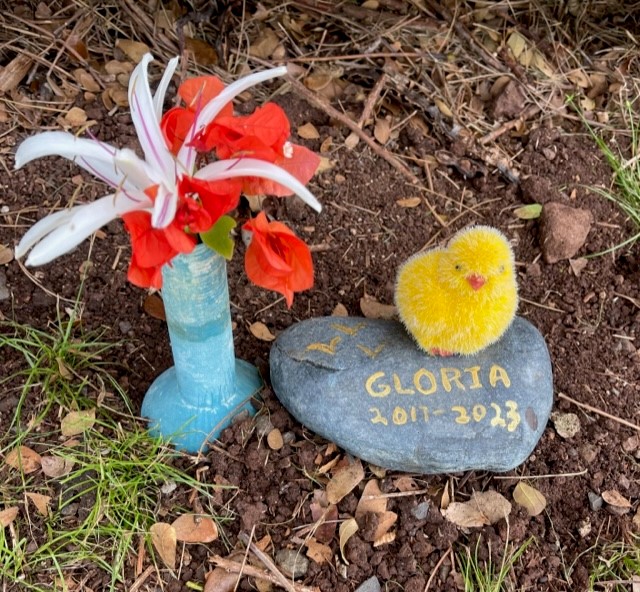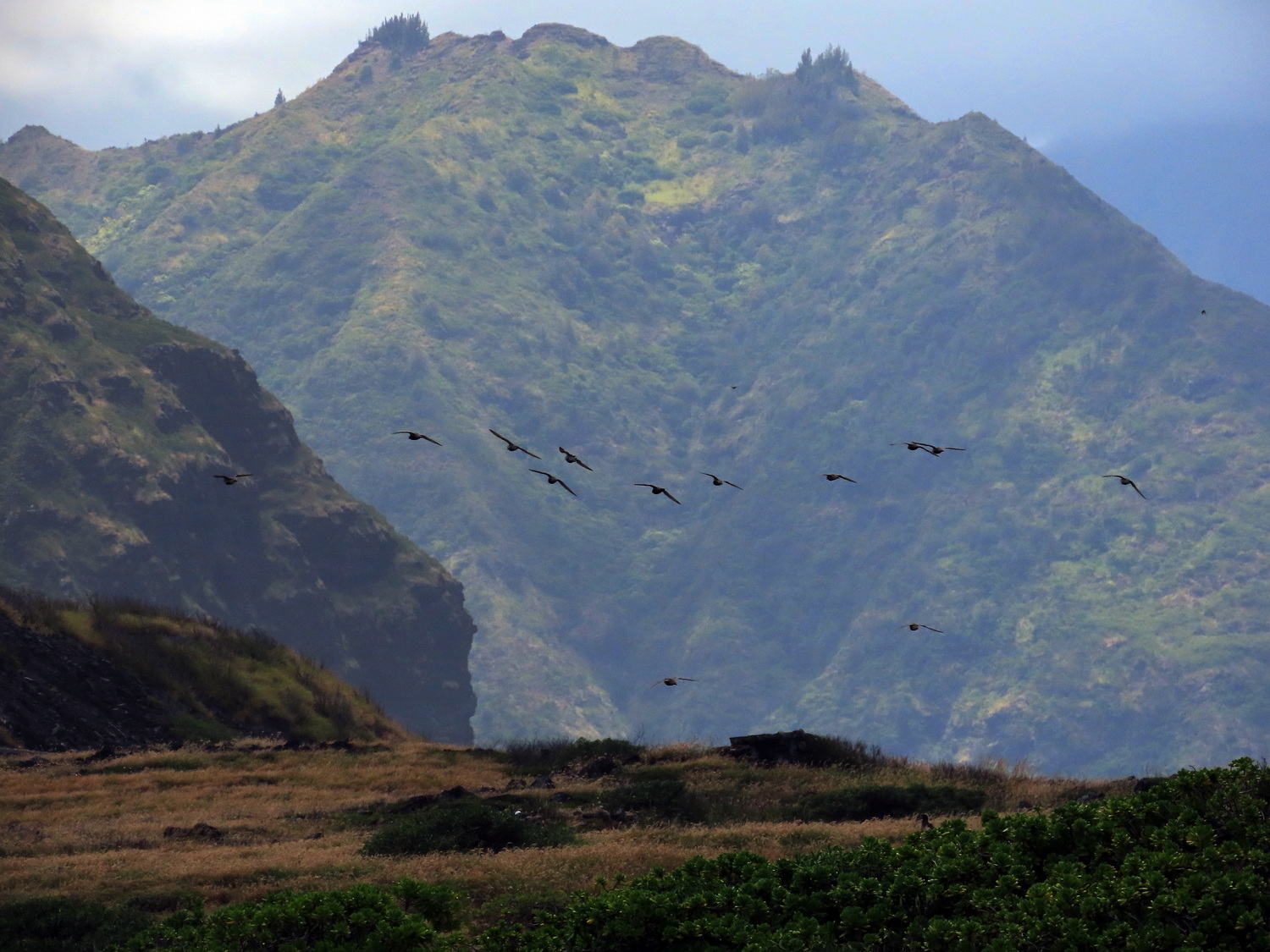
Kōlea in flight, Kaena Point. ©Leslie MacPherson, DLNR.
April 27, 2023
Goodbye and good luck
Since late March, kōlea watchers have been reporting behavior changes in the birds they’re watching. Some say their birds became exceptionally active and friendly. (See my April 5th post about our bird, Jake.) Others noticed that their bird began to tolerate other birds in its territory. One plover fan reported that her plover started making soft cheeping sounds, as if trying to communicate.
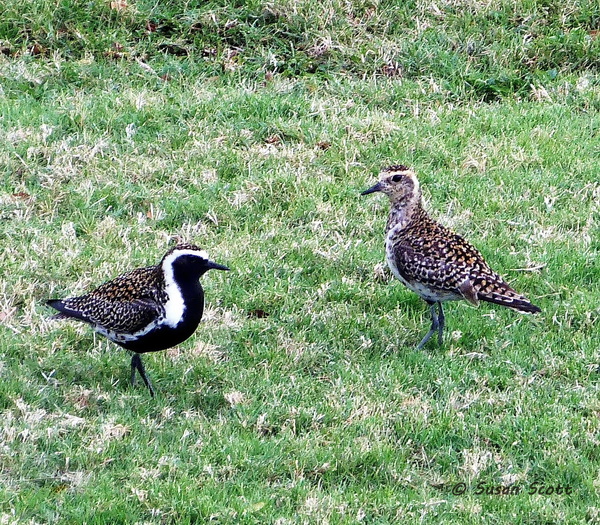
Our male, Jake, (left) usually defends his foraging territory from other birds but come April, he tolerates company, such as this attractive female. ©Susan Scott
The big question we plover followers had this month is: Where are the kōlea gathering for the big departure?
It’s a good question, one that Kolea Count is helping answer. Since early and mid April, plover watchers have reported that their bird is gone. It’s not likely they went to Alaska that early, because others reported flocks of 8-to-60 or so individuals gathering in fields at Ford Island near the NOAA building, Tripler Army Hospital, the lower campus of UH, and Diamond Head Crater.

Plover fan, Roger Kobayashi, escorted me onto Ford Island (military ID required) to see the gathering near the NOAA building. ©Susan Scott
By yesterday, April 26th, Roger reported that the birds were gone from Tripler. I also checked Kailua Beach Park and Kualoa Regional Park. None.
With no reports of the exact liftoff moment, it’s hard to say the precise day our plovers leave for Alaska. It’s probably safe to say that as of today, April 27th, most of Hawaiʻi’s kōlea are winging their way, nonstop, to their breeding grounds, 3,000 miles away. Wally Johnson, who is following reports, emailed: “Looks like departure is on schedule. Tough to get precise data, but appears to be about the same timing as last 40+ years!”
Come July and August, our kōlea will repeat this astonishing journey when they return to Hawaiʻi. We plover lovers will welcome them back with open arms.
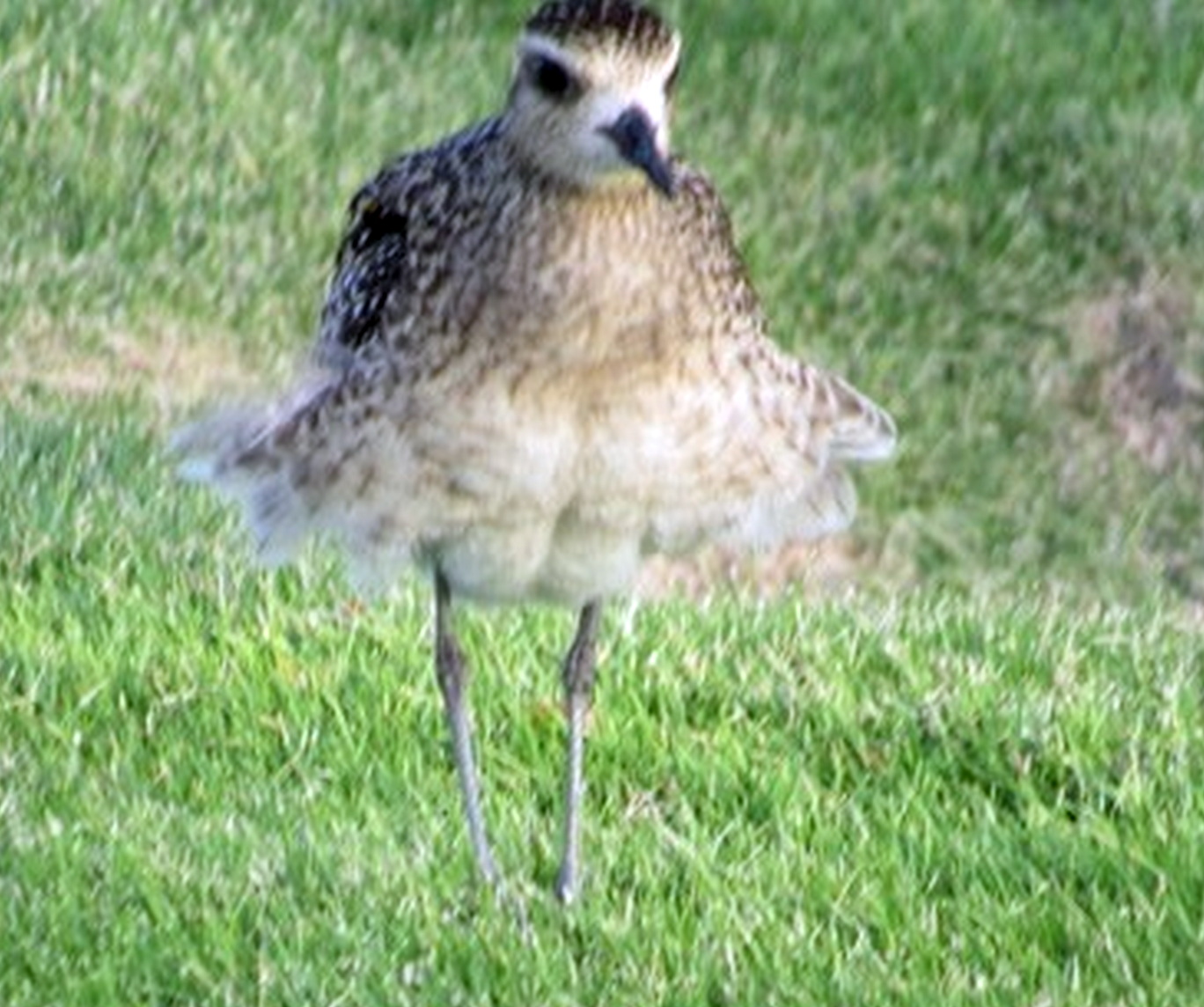
Hawaiʻi Audubon board member and kōlea fan, Pat Moriyasu, shot this funny photo of a kōleaʻs “skirt” during one of our blustery days in early March.
Wally Johnson’s multiple migrations
In March, 2022, plover researcher Wally Johnson and volunteers from the Hawaii Audubon Society caught 30 kolea in mist nets at Punchbowl Cemetery for a successful migration study. To relieve the birds of their tiny backpacks, as well as to recharge the depleted batteries and reuse the $1,500-each devices, Wally returned in September to capture the birds carrying tracking devices (below photos.)
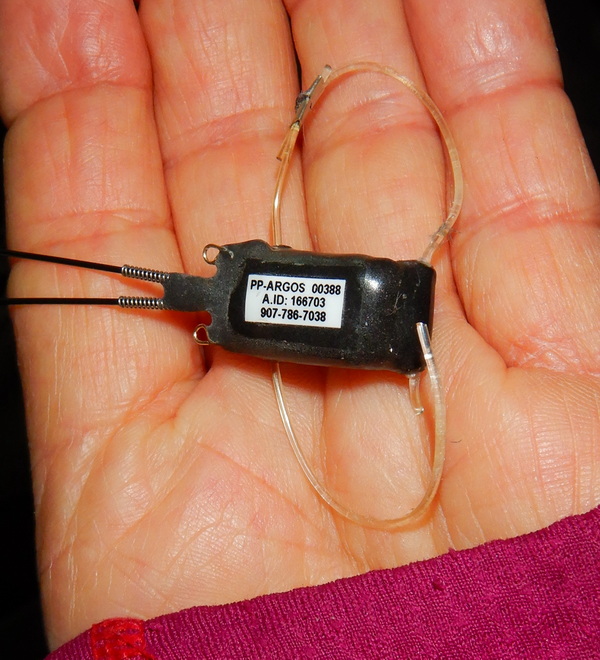

After repeated attempts, Wally and volunteer teams caught all but four tagged birds. Everyone involved was disappointed that we failed to recover four devices, but we tried hard.
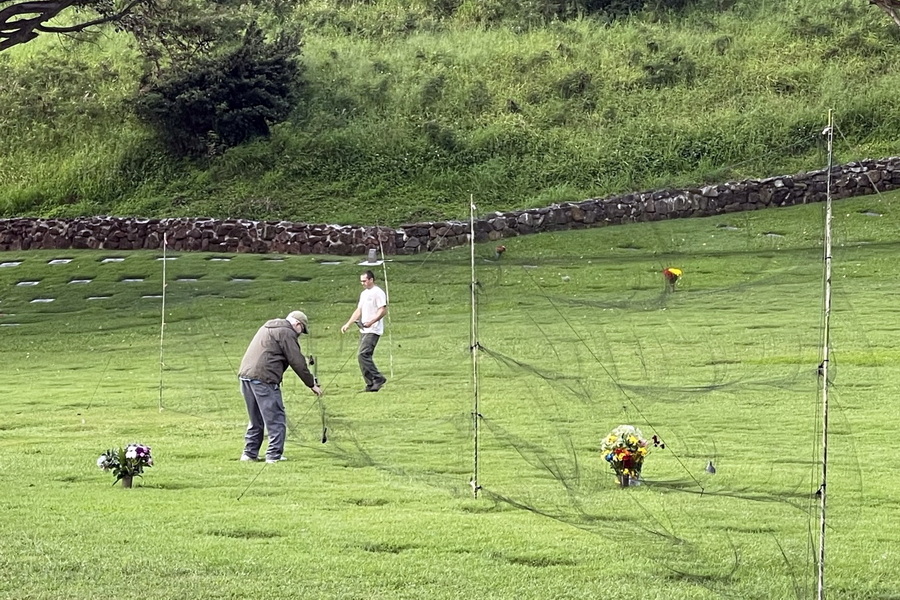
In our mist nests, we also occasionally, but fortunately not often, caught mynahs, bulbuls, mockingbirds, red-crested cardinals, and one rose-ringed parakeet. We untangled all birds and they flew off unharmed. ©Susan Scott
I thought that was the end of the story. Wally surprised us, however, by travelling back to Hawaiʻi the end of March to have another go at the elusive four.
For two weeks we worked, our teams arriving at the cemetery at 4:30 AM to set up, in the dark, nearly invisible mist nets in areas the four plovers foraged during the day.
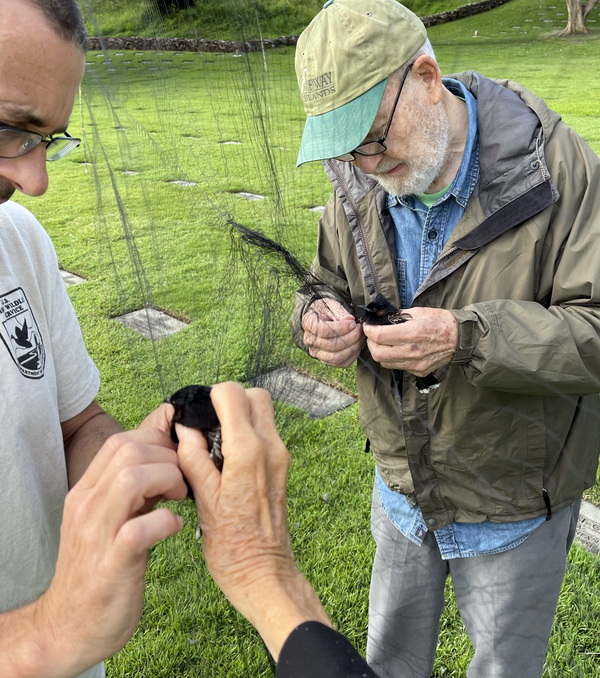
Wally and Josh each untangling a bulbul.
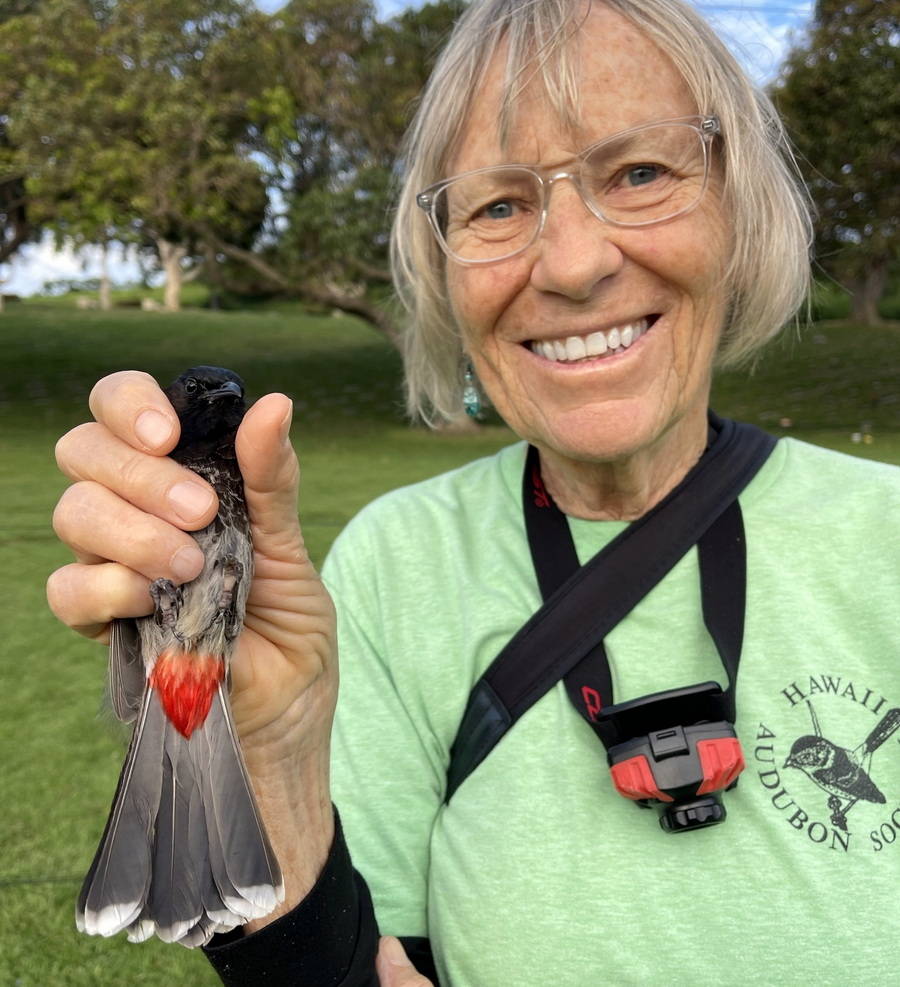
Me about to set free a grumpy red-vented bulbul.
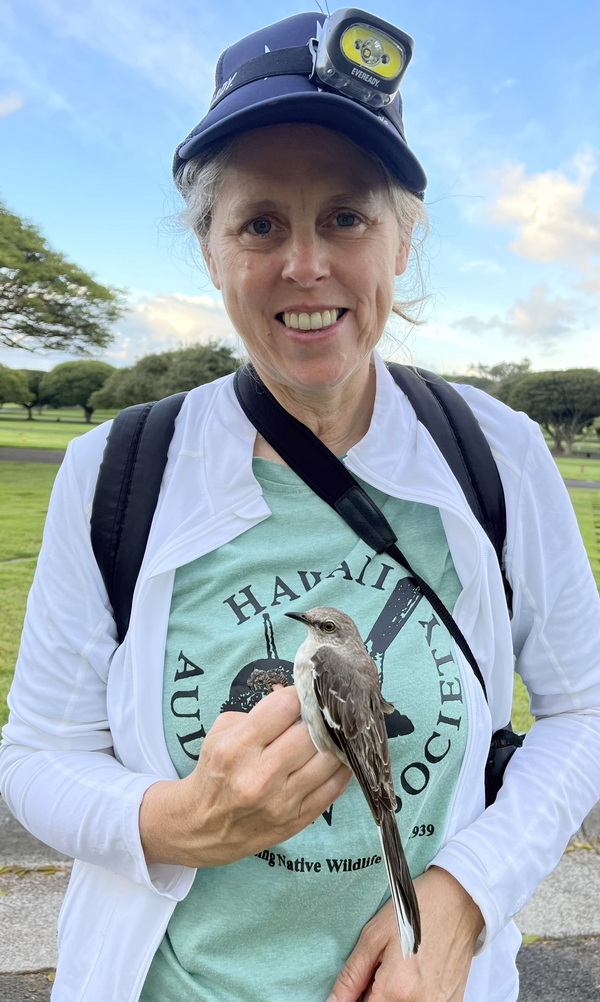
KCC Professor, Wendy Kuntz, with her freed mockingbird.
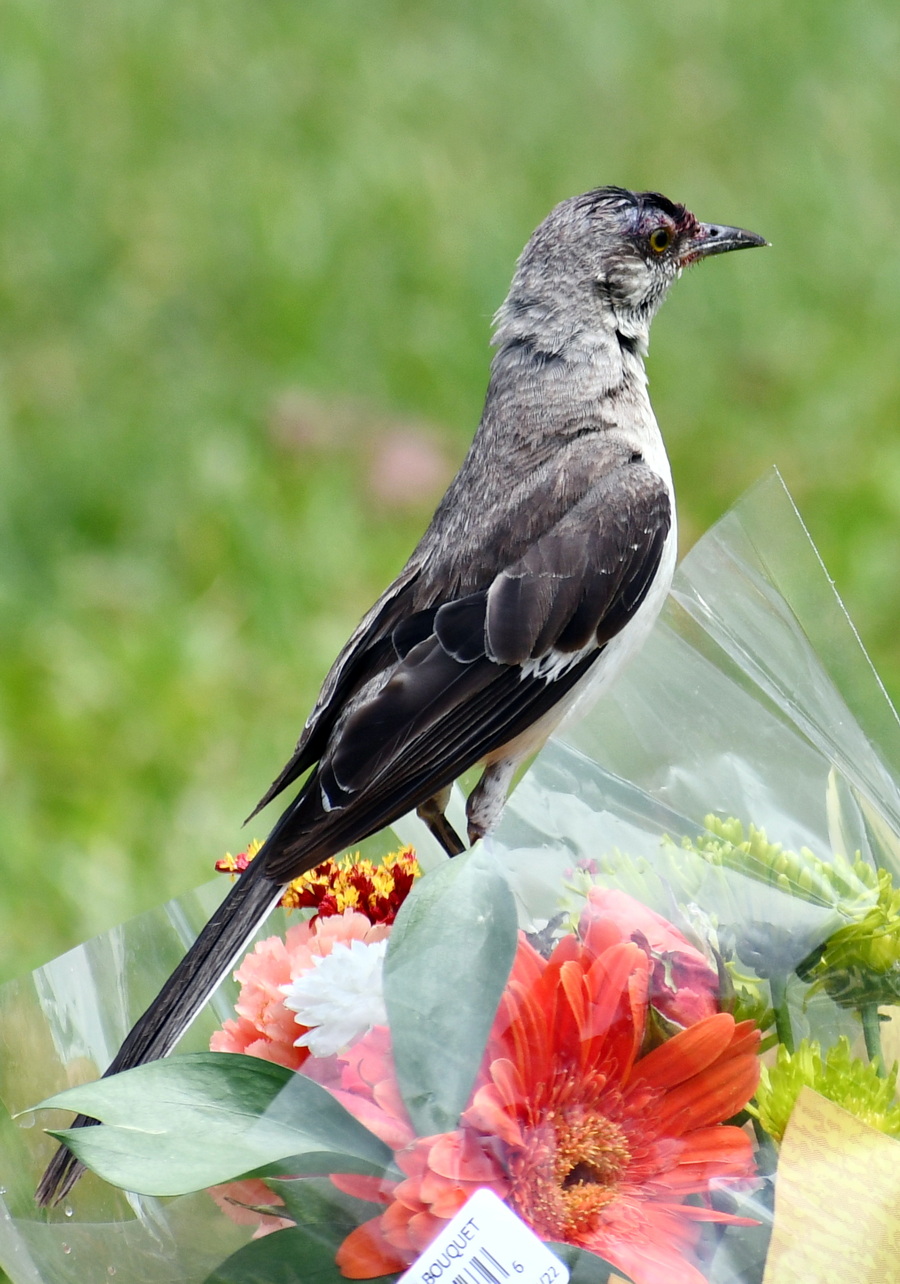
A few mockingbirds, introduced to Hawaiʻi in 1928, live in Punchbowl crater.
But having been caught once, the remaining four were not about to fall for such trickery again. Our target birds repeatedly avoided the nets, either seeing them in the dark with their excellent vision, or hearing us at setup and steering clear.
When Wally drove USFWS biologist, Josh Fisher, an expert with the net gun, in a rental car’s passenger seat, the birds they flew off whenever Josh got within range. We joked about dressing Josh in a disguise, or getting a different car, but whenever a car slowed near them, the wily birds flew off.
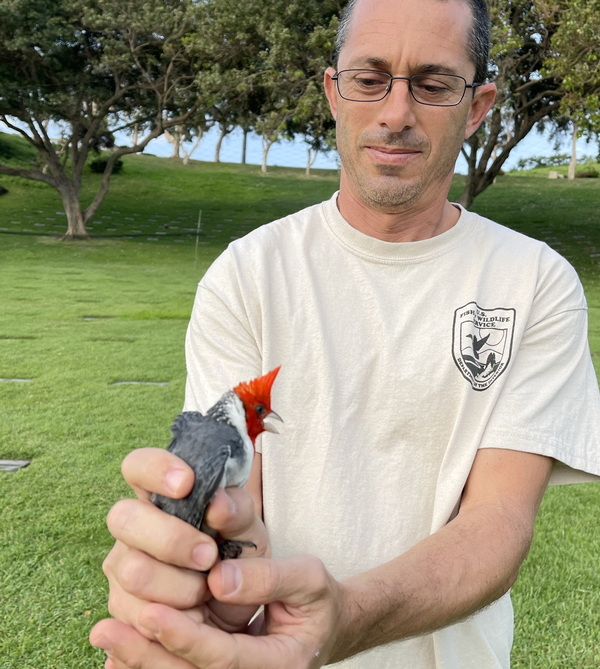
Josh after removing a red-crested cardinal from our net.
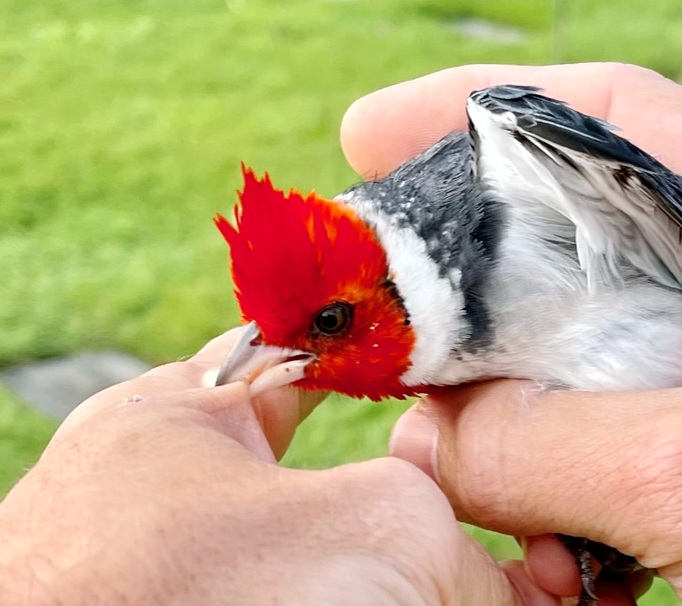
The thanks Josh got from liberating the cardinal. (The pinch didn’t break Josh’s skin.)
After the nets were down and the drive-by stalking stopped, the backpacked birds returned to their territories and resumed eating.
Wally finally had to return home to Bozeman, and we bid farewell to our little research birds, hoping that the thin elastic bands around the upper part of the bird’s legs will break and the tags will fall off. We will know more about the fate of the four in August when the kōlea return to Hawaii. (They have colored leg bands for ID.)
We take comfort in knowing that a lot of us gave it our best efforts, and that the four birds provided significant information about their species, crucial in helping them thrive.
Kōlea Count Project
The count for this season ended on March 31st. For this 2022-2023 season, we received 402 entries for Big Counts and 114 entries for Little Counts. Thank you all for contributing to this Citizen Science project, a study designed to last for a total of 10 years.
Departure dates are still coming in for April and May. Please report summer sightings only in June. May might be late leavers and July may be early returnees if their nesting attempts failed. July 1st through November 30th are still ARRIVAL dates, since the summer’s chicks can arrive as late as November.
Hit-and-run
A sad kōlea event occurred inside my Kailua condominium complex where someone ran over our old kōlea friend, Gloria. I thought the bird was at least 6 years old, but one resident told me the bird was at least 10, because she taught her son about the plover when he was 3 and he’s now 13. Kōlea can live for 20 or more years.
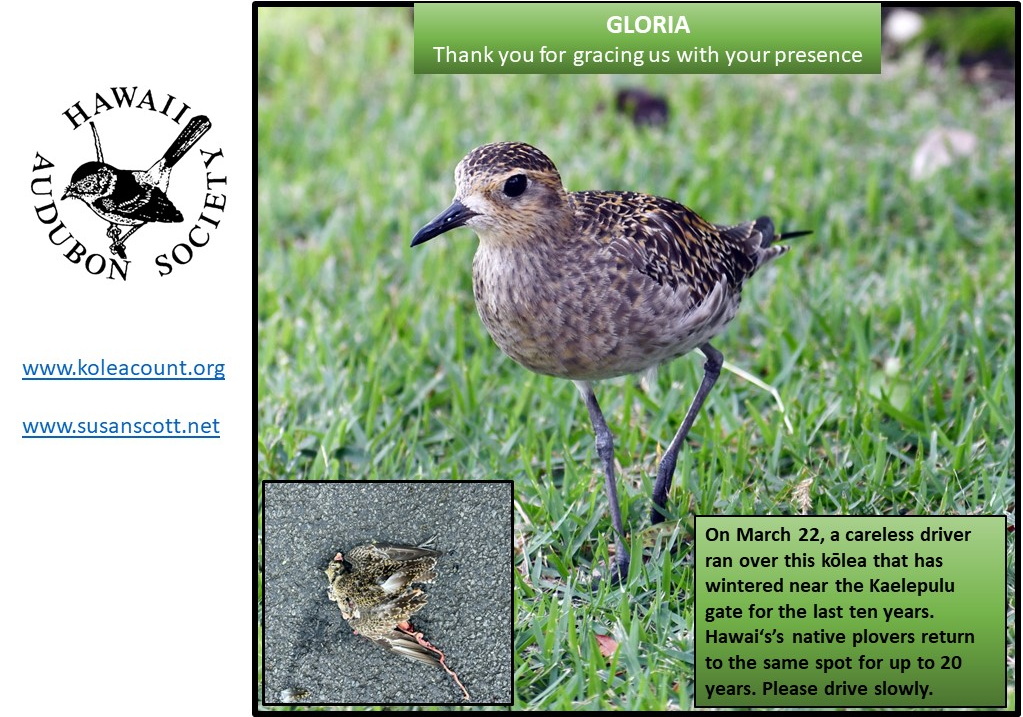
If we are kind enough to give them a brief moment, plovers foraging in a road will step aside to avoid a car.
At Wally Johnson’s suggestion, we posted these pictures with a drive slowly message on the Hawaii Audubon Society’s Facebook and Instagram pages. I also posted the above flyer at the seven mailbox alcoves in our complex.
A kind condo worker helped me bury Gloria and we made her a memorial. ( We can’t be sure without an ID leg band, but the bird’s arrival date is more likely 2013.)
